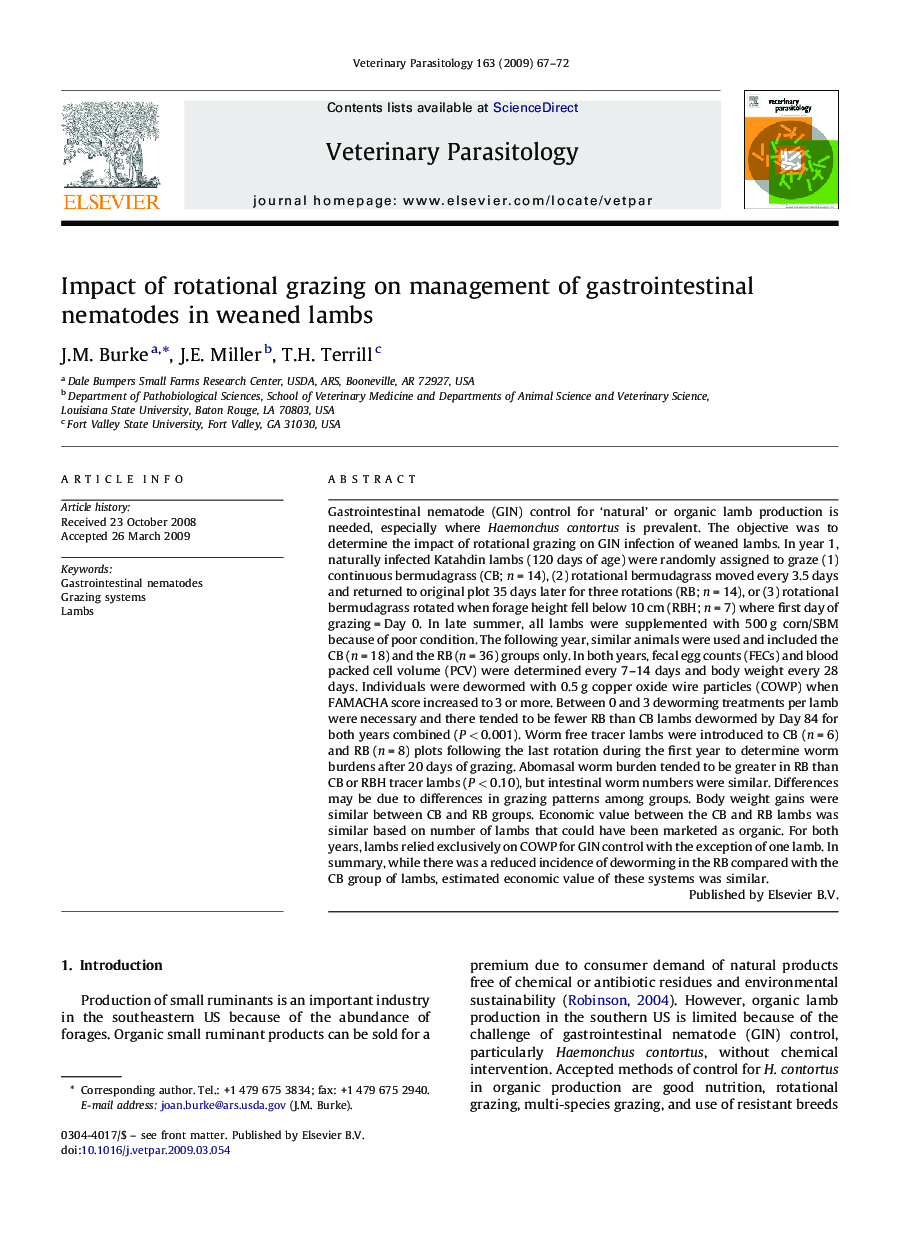| کد مقاله | کد نشریه | سال انتشار | مقاله انگلیسی | نسخه تمام متن |
|---|---|---|---|---|
| 5806194 | 1555752 | 2009 | 6 صفحه PDF | دانلود رایگان |

Gastrointestinal nematode (GIN) control for 'natural' or organic lamb production is needed, especially where Haemonchus contortus is prevalent. The objective was to determine the impact of rotational grazing on GIN infection of weaned lambs. In year 1, naturally infected Katahdin lambs (120 days of age) were randomly assigned to graze (1) continuous bermudagrass (CB; n = 14), (2) rotational bermudagrass moved every 3.5 days and returned to original plot 35 days later for three rotations (RB; n = 14), or (3) rotational bermudagrass rotated when forage height fell below 10 cm (RBH; n = 7) where first day of grazing = Day 0. In late summer, all lambs were supplemented with 500 g corn/SBM because of poor condition. The following year, similar animals were used and included the CB (n = 18) and the RB (n = 36) groups only. In both years, fecal egg counts (FECs) and blood packed cell volume (PCV) were determined every 7-14 days and body weight every 28 days. Individuals were dewormed with 0.5 g copper oxide wire particles (COWP) when FAMACHA score increased to 3 or more. Between 0 and 3 deworming treatments per lamb were necessary and there tended to be fewer RB than CB lambs dewormed by Day 84 for both years combined (P < 0.001). Worm free tracer lambs were introduced to CB (n = 6) and RB (n = 8) plots following the last rotation during the first year to determine worm burdens after 20 days of grazing. Abomasal worm burden tended to be greater in RB than CB or RBH tracer lambs (P < 0.10), but intestinal worm numbers were similar. Differences may be due to differences in grazing patterns among groups. Body weight gains were similar between CB and RB groups. Economic value between the CB and RB lambs was similar based on number of lambs that could have been marketed as organic. For both years, lambs relied exclusively on COWP for GIN control with the exception of one lamb. In summary, while there was a reduced incidence of deworming in the RB compared with the CB group of lambs, estimated economic value of these systems was similar.
Journal: Veterinary Parasitology - Volume 163, Issues 1â2, 7 July 2009, Pages 67-72